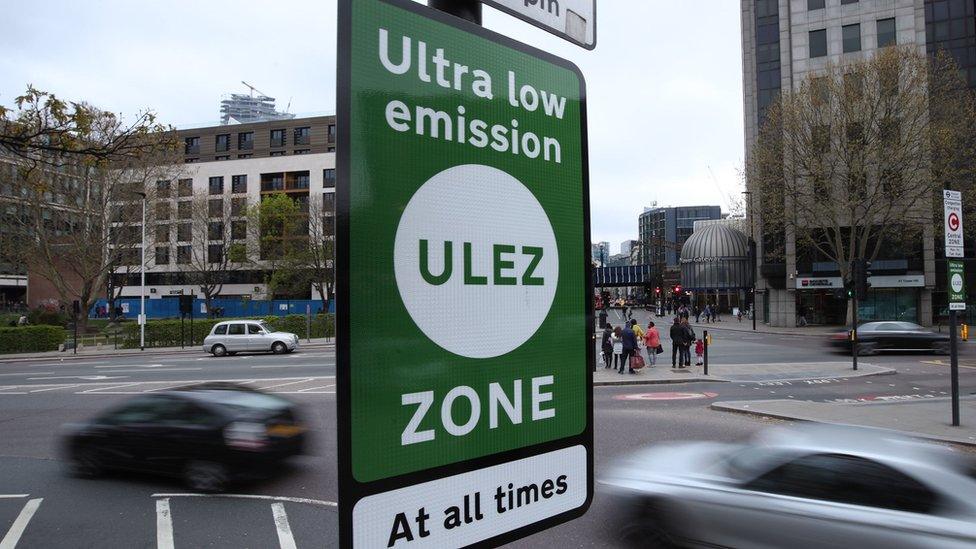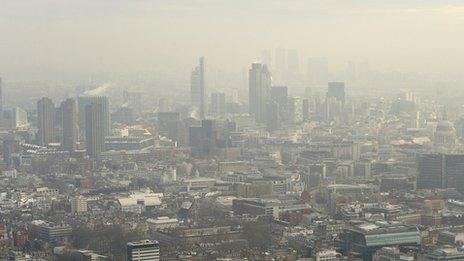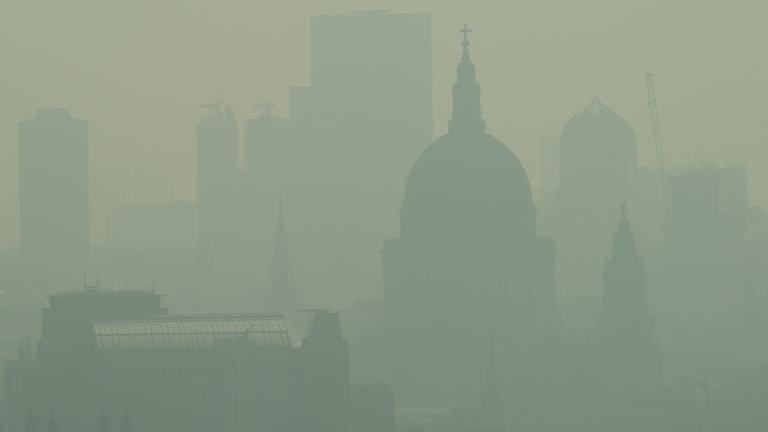ULEZ: New pollution charge zone to begin in London
- Published

The original ULEZ in central London saw the number of cleaner vehicles increase from 39% in 2017 to 80%
In less than a week, ULEZ will become ULEX. If you live in London and drive an older diesel or petrol car, radical changes are just around the corner.
From 25 October, the existing Ultra Low Emission Zone will expand to create a larger district comprising of the area within the North and South Circular roads.
What does that mean?
The new scheme uses the principle of the "polluter pays".
Broadly, if you have an old petrol or diesel vehicle then you may have to pay £12.50 a day to drive in the zone.
At the moment, four out of five vehicles in the city are already compliant, but thousands are not. These are the cars the scheme will target.
Transport for London estimates that 138,000 non-compliant vehicles could be affected when driving within the area.
You can check if you will have to pay here., external

Whether your car complies depends on the amount of nitrogen dioxide (NO2) it emits. Broadly, diesels made before September 2015 and petrol vehicles made before 2006 will have to pay.
NO2 has been shown to harm lungs and worsens chronic illnesses such as asthma, lung and heart disease.
If you do not pay the charge, you could receive a £160 fine. More than 700 cameras will monitor vehicles in the zone.
Why extend?
Put simply, Mayor of London Sadiq Khan wants to clean up London's air.
The mayor's transport strategy is to try to achieve 80% of trips across London through walking, cycling and mass transport by 2040; the ULEZ is feeding into a long-term vision of the city by 2040.
The original ULEZ in central London saw the number of cleaner vehicles increase from 39% in 2017 to 80%.
Roadside NO2 levels fell by 44%. So this is Mr Khan's his way of trying to change our behaviour when it comes to the environment.
The scheme is expected to make £1.9m a day but there are huge set-up costs of between £90m and £139m. City Hall previously said it did not expect to make money on the scheme.
If it does, then the funds will be put back into transport schemes.

Thousands of vehicles a day are expected to be affected by the charge
Despite Mr Khan's attempts, some environmental campaigners believe the scheme does not go far enough.
Due to the layout of the North and South Circular roads, much of south London is not included in the zone.
Green Party assembly members say that one in 10 roads in London will remain toxic after the expansion.
But many businesses say that the extra cost involved in changing their fleet is crippling.
Conservative assembly members believe the introduction should be delayed a year as it will hamper the recovery from the pandemic.
Many other cities in the UK are planning similar emissions zones so it seems this type of emission-based system is here to stay.
Related topics
- Published26 March 2019
- Published8 April 2019

- Published5 April 2019
- Published8 April 2019
